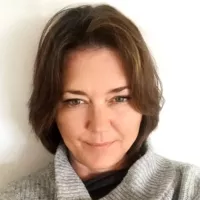- with readers working within the Technology industries
- within Transport, Real Estate and Construction and Law Practice Management topic(s)
The woman who spent 20 years in prison over the deaths of her infant children has finally had her convictions for the offences of murder and manslaughter quashed by the highest criminal court in the state, the New South Wales Court of Criminal Appeal.
It's been a long road to freedom for Kathleen Folbigg, who was once the ‘most hated' person in Australia, accused and then convicted of killing her four young children.
According to a representative from the Australian Academy of Science:
“Kathleen Folbigg was convicted for murdering her children by suffocation, yet there was no pathology-based evidence of suffocation of the children
Medical and pathological evidence was available to indicate natural causes of death of the Folbigg children
The case against Kathleen Folbigg was premised on an incorrect logic that four children could not die in a family from natural causes unless it was one unifying cause of death. Meadow's Law has now been discredited.
Circumstantial evidence (including non-scientific opinions about Ms Folbigg's diaries) was given more weight than medical and pathological evidence available at the time of trial
At the first Inquiry, erroneous interpretation of data held in the International Calmodulinopathy Registry was presented and accepted
No journalling, trauma or grief experts were given the opportunity to provide expert evidence in a formal legal process until the 2022 Inquiry.”
Despite the lack of scientific evidence to support her conviction, it was science that paved the way to Kathleen Folbigg's freedom – with research by a group of prominent scientists utilised by tenacious friends and supporters to push for her release.
And while she'll never get her decades back, Ms Folbigg is now free to pursue compensation from the New South Wales State Government, which is predicted to be one of the largest compensation payouts of its kind.
But before we take a look at Ms Folbigg's long road to freedom, let's answer the question of what it means to have a criminal conviction ‘quashed'.
What is a quashed conviction?
Having a conviction for criminal offences quashed on appeal means it is no longer in place, but this does not necessarily mean that a person to whom this applies is free from having to face further proceedings for the quashed offence or offences.
Rather, the appeal court can do one of two things when it quashes a conviction:
- To acquit the person of the offence, or
- To order a retrial for the offence.
If an acquittal is ordered, the person is formally found not guilty of the offence – which under the principle of double-jeopardy means they cannot be retried, except in extremely limited circumstances.
Clearly, this is the best outcome for the appellant and will almost always mean they are free to get on with their lives.
If, however, a retrial is ordered, it means the case will be remitted (referred back) to the court in which the person was convicted and – unless the proceedings are withdrawn (charges dropped) by the prosecution (eg the Office of the Director of Public Prosecutions), the person will have to face another trial.
Where a case is so remitted, the person's criminal defence lawyers will often make formal representations to the prosecution calling for the proceedings to be discontinued.
Representations are a document which requests the withdrawal / downgrading of criminal charges, and are often followed up with a ‘case conference' between the defence and prosecution during which the defence lawyer will seek to persuade the prosecution to ‘drop the case' or replace the existing charges will less serious ones.
Now, back to the case of Kathleen Folbigg.
Scientific breakthrough
In 2018, research determined that Kathleen Folbigg's two daughters carried a rare genetic variation, which suggested that there was a high chance their deaths were by natural causes. Research also determined that her two boys carried variants of a gene which was shown in laboratories to cause early onset lethal epilepsy in mice. There was also a high probability that their deaths were by natural causes.
These scientific breakthroughs triggered an inquest in 2019 and another in 2022 which eventually determined that there was “reasonable doubt” Kathleen Folbigg did not kill her children. In June this year she was granted a pardon and released from jail after spending twenty years of a thirty-year sentence for three counts of murder and one of manslaughter.
Independent judicial inquiry
In a final report released in November, inquiry commissioner Tom Bathurst KC concluded that there was an “identifiable cause” for three of the deaths and that Kathleen Folbigg's relationship with her children did not support the case that she killed them.”
The inquests also examined all aspects of the original trial, and determined that the original verdict was not based on medical evidence. The case against Kathleen Folbigg relied heavily on personal journal entries and presented them as admissions of guilt.
In the Court of Appeal last week Kathleen Folbigg accused prosecutors of ‘cherry picking her private words'. Experts have also weighed in on those journal entries saying that far from being admissions of guilt, they are the emotional outpourings of a grieving mother trying to come to terms with the deaths of her children.
The appeal judges agreed with Tom Bathurst's findings that the mother's diary entries – controversially used during her trial to help secure her convictions – did not contain reliable admissions of guilt.
In the original trial Prosecutors also relied on the controversial “Meadow's Law”, named after British paediatrician Roy Meadow, who adopted the opinions of American pathologists Vincent and Dominick Di Maio when giving expert evidence in the prosecutions of British women over ‘cot deaths', now known as Sudden Infant Death syndrome (SIDS) in the 1980s and 1990s.
Meadow's Law essentially presumed that more than two sudden infant deaths in a family was “murder until proven otherwise”.
Meadow's Law was based on statistics of probability. At the time it was considered valid until it became very clear, as a result of significant research into what causes SIDS, and also consideration by mathematicians with regard to the questionable calculations behind Meadow's Law. Eventually, Meadow's calculations were rebuked by Britain's Royal Statistical Society, which gave more weight to other environmental and genetic factors associated with multiple SIDS cases within the same family, and Meadow's Law became discredited as reliable evidence.
But by then it had been used to sway juries and wrongly convict a number of women of infanticide, and it had also been presented at Kathleen Folbigg's trial.
The need for an independent body to review wrongful convictions
Her case has renewed calls for an independent body to investigate possible miscarriages of justice, resulting in wrongful convictions. Currently, independent judicial reviews can only be set in motion by the Governor of New South Wales, as outlined in section 77(1)(a) of the Crimes (Appeal and Review) Act 2001.
This is very different to the United States, for example, which has a very robust Innocence Project which reviews selected cases of alleged wrongful imprisonment.
England, Wales and Northern Ireland have a Criminal Cases Review Commission (CCRC) whose role is to review the cases of alleged wrongful convictions, investigate them and, where appropriate, act to ensure justice.
New Zealand established a Criminal Cases Review Commission in 2020. It was set up as a result of concerns about the length of time the previous review process was taking, the reluctance of appeal courts to overturn convictions and the poor quality of investigations into miscarriages of justice, as well as the high cost of legal advice for those seeking a review.
The content of this article is intended to provide a general guide to the subject matter. Specialist advice should be sought about your specific circumstances.
[View Source]


